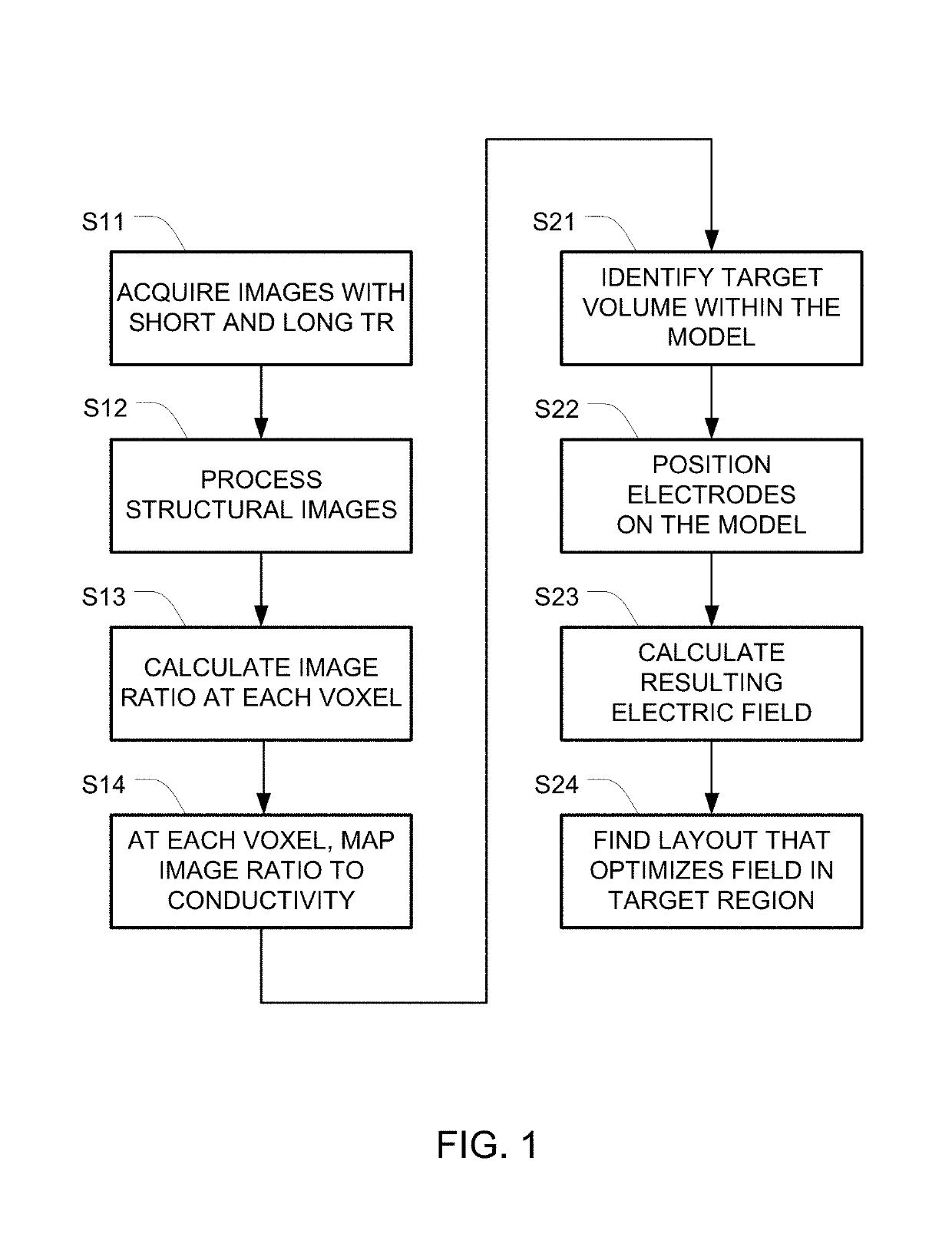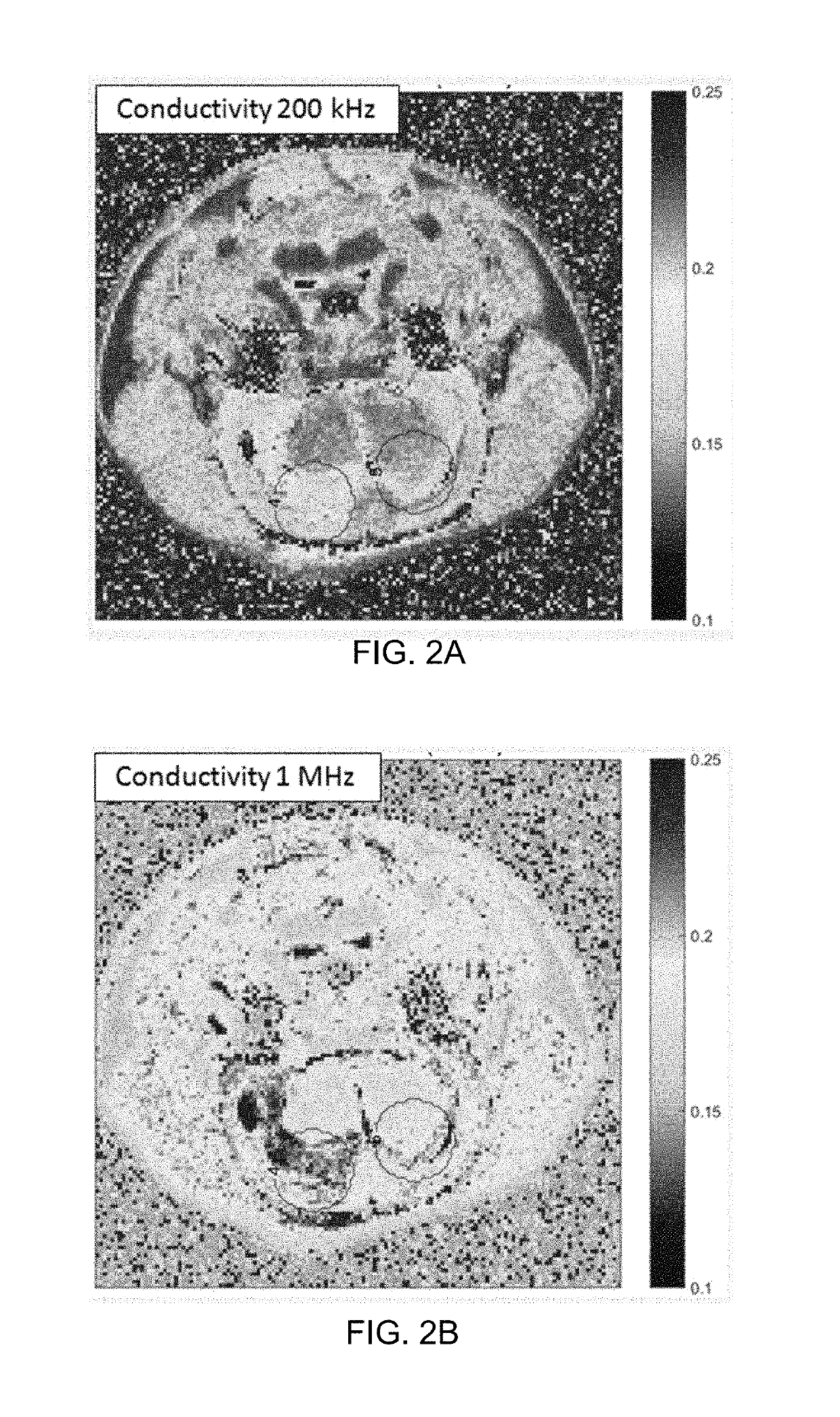TTField Treatment with Optimization of Electrode Positions Based on Low Frequency (<1MHZ) AC Conductivity Estimates Derived From Two MRI Images Having Different Repetition Times
a technology of electrode position and conductivity estimation, applied in the field of ttfield, can solve the problems of a relatively low number of slices and a relative slow speed of images
- Summary
- Abstract
- Description
- Claims
- Application Information
AI Technical Summary
Benefits of technology
Problems solved by technology
Method used
Image
Examples
Embodiment Construction
[0016]This application describes an approach for creating realistic head models for simulating TTFields that is much more computationally efficient and provides higher resolution than the prior art approach described in U.S. Pat. No. 10,188,851. More specifically, instead of determining the conductivity for each voxel in an anatomic volume based on DWI or DTI, the conductivity for each voxel is determined based on two MRI images with different repetition times. (For example, a first set of T1 MRI images captured with a repetition time of 700 ms and a second set of T1 MRI images captured with a repetition time of 4 seconds.)
[0017]Using the image ratio between two MRI images instead of DWI or DTI images (as in the '851 patent) provides improved results because the number of frames required to form a single DTI image slice is much higher than the number of frames required to form a single T1 image slice. As a result, DTI images will include far fewer slices than T1 images (assuming the...
PUM
 Login to View More
Login to View More Abstract
Description
Claims
Application Information
 Login to View More
Login to View More - R&D
- Intellectual Property
- Life Sciences
- Materials
- Tech Scout
- Unparalleled Data Quality
- Higher Quality Content
- 60% Fewer Hallucinations
Browse by: Latest US Patents, China's latest patents, Technical Efficacy Thesaurus, Application Domain, Technology Topic, Popular Technical Reports.
© 2025 PatSnap. All rights reserved.Legal|Privacy policy|Modern Slavery Act Transparency Statement|Sitemap|About US| Contact US: help@patsnap.com


